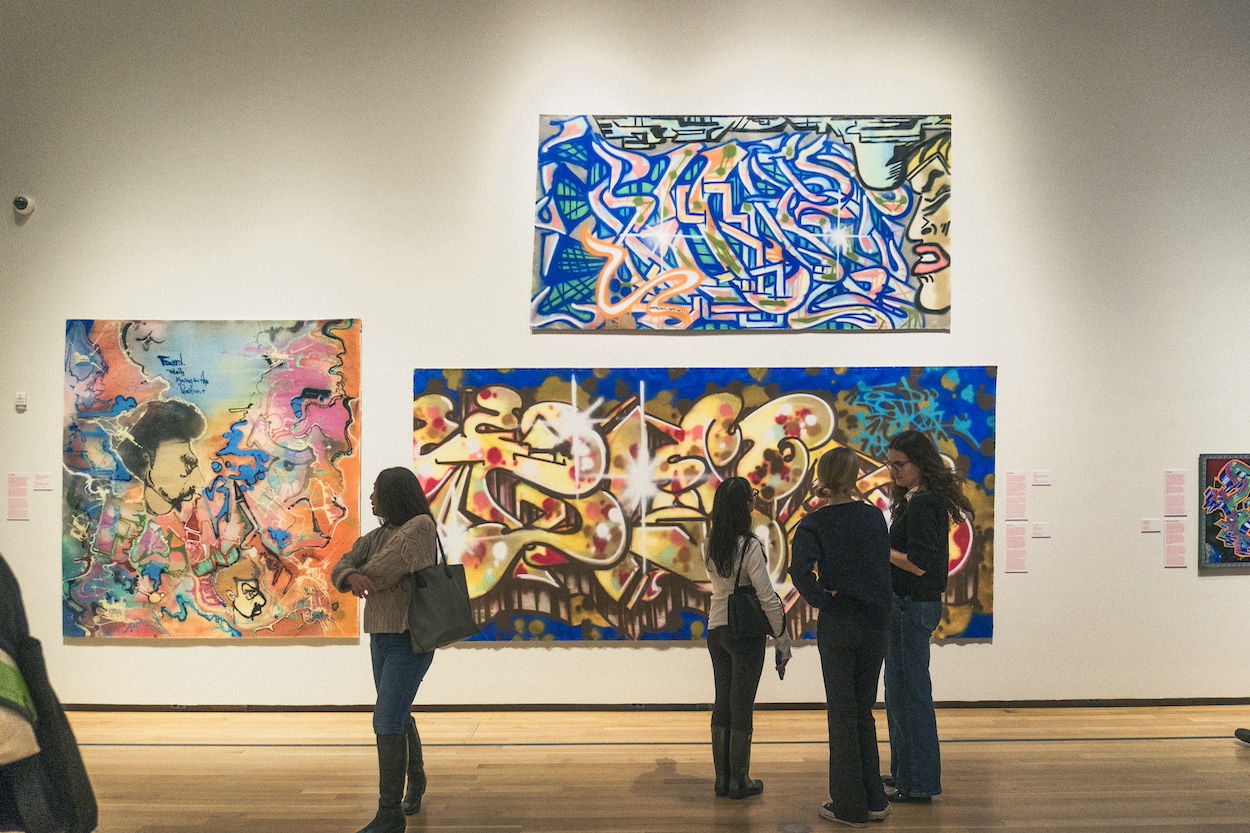Opening night of Above Ground: Art from the Martin Wong Graffiti Collection | MCNY 
“Everything I paint is within four blocks of where I live, and the people are the people I know and see all the time,” artist Martin Wong (1946–1999) once said. This quote reflects not only the sense of preservation that he had in his own work, but also the ethos that drove him to become one of the most significant collectors of early NYC graffiti art. At the time, this was not a popularly held view. In an influential academic paper on the subject, authors Maryalice Sloan-Howitt and George L. Kelling write: “By 1984, graffiti covered every train car in the New York City subway. Every attempt to deter the graffitists had failed. Apologists saw graffiti as folk art; others saw graffiti as the premier symbol of the failure of government to protect citizens from the depredations of vandals and criminals.”

 : Herman Yung
: Herman YungMartin Wong saw it differently, he saw it for what it truly was: a vibrant, homegrown, art movement erupting on subway cars, walls, and handball courts, with some writers beginning to translate their work onto canvases. While the powers that be scrambled to scrub it off property and out of the collective consciousness, Wong was quietly building one of the most epic archives of work from some of the best to have ever done it.

 : Herman Yung
: Herman YungThat time capsule is now on display at the Museum of the City of New York (MCNY). “Above Ground celebrates the 30th anniversary of Martin Wong’s donation to the museum and the 10th anniversary of MCNY’s initial City as Canvas exhibition,” says curator Sean Corcoran. “This show offers a renewed and expanded look at graffiti’s journey from NYC streets to the most prestigious galleries around the world.”

 : Herman Yung
: Herman YungGraffiti in the ’80s was raw, loud, and chaotic—a perfect reflection of a city teetering on the edge. The art Wong collected captured that frenetic energy, featuring work by LEE, FUTURA, DAZE, ZEPHYR, TRACY 168, LADY PINK, HAZE, QUIK, CRASH, DONDI, Keith Haring, RAMMELLZEE, COCO 144, STITCH 1, ERO, BEAR 167, STAN 153 and many others; it’s extensive. The assemblage also includes the very important photographic documentation of Jack Stewart, Henry Chalfant and Martha Cooper.

 : Herman Yung
: Herman YungToday, graffiti’s popularity is so widespread that its legitimacy as an art form feels like a given. That’s what makes an exhibit like this so important—back in the 1980s, when Wong was building his repository, the idea of graffiti being celebrated in museums or embraced by the mainstream was almost unthinkable. It was mostly understood as a juvenile activity. “There are people who see the graffiti experience as a vocation of adolescence, rites of passage without a sense of direction,” explains LEE Quiñones. “But I saw it early on a a catalyst to develop as a painter and explore the other horizons outside of a 40-foot subway car.”

 : Herman Yung
: Herman YungMartin Wong was also a true believer. While working at Pearl Paint on Canal Street, he met and became friends with many of the graffiti writers whose work he later collected—they were outlaws, artists, and kids, all rolled into one. By purchasing their work, he gave them more than money; he gave them validation, a sense of legitimacy at a time when the world treated them like criminals. His tiny Lower East Side apartment became a DIY museum, packed with hundreds of works, from spray-painted canvases to black books brimming with sketches and tags. Wong wasn’t just archiving graffiti. He was archiving New York’s soul.

 : Herman Yung
: Herman YungWhat makes Above Ground an interesting thing to view, isn’t just the art. It’s the reminder of what New York used to be: gritty, wild, and alive. Wong knew that even this creative chaos deserved to be preserved, and his collection makes it impossible to forget. The show runs until August 10, 2025. Go see it, and thank Martin Wong for saving a part of the city they couldn’t kill.

 : Herman Yung
: Herman Yung
 : Herman Yung
: Herman Yung
 : Herman Yung
: Herman Yung
 : Herman Yung
: Herman Yung
 : Herman Yung
: Herman Yung
 : Herman Yung
: Herman Yung
 : Herman Yung
: Herman Yung
 : Herman Yung
: Herman Yung
 : Herman Yung
: Herman Yung
 : Herman Yung
: Herman Yung
 : Herman Yung
: Herman Yung
 : Herman Yung
: Herman Yung


